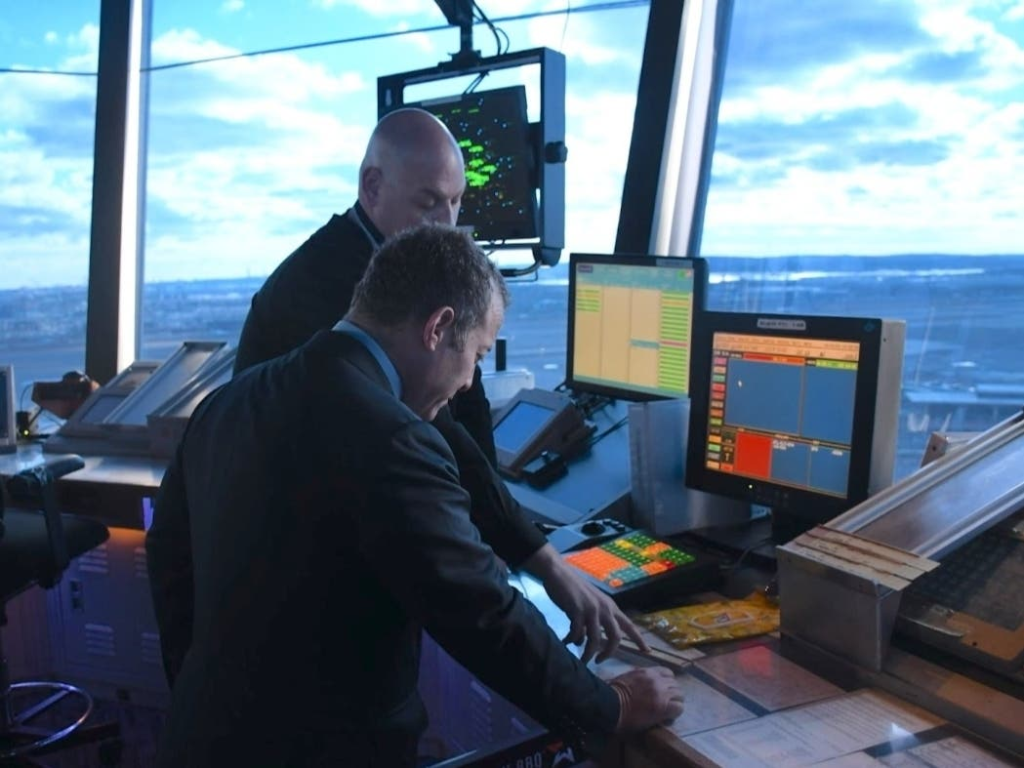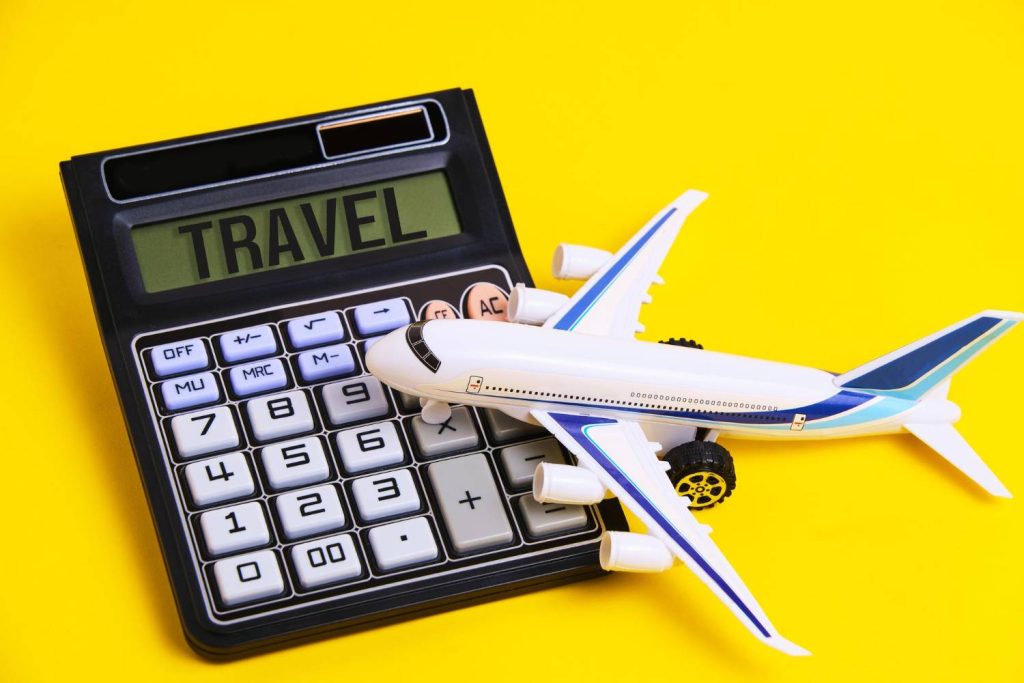Newark air traffic controllers faced a significant communication failure last week, causing widespread chaos at Newark Liberty International Airport. This situation resulted in over 1,500 flight delays, raising concerns about air traffic control failures and FAA staffing issues in the U.S. aviation sector. With United Airlines announcing a reduction of 35 flights from its primary hub to mitigate future disruptions, passengers are feeling the impact of these ongoing challenges. The incident highlighted not only the vulnerabilities in aviation communication systems but also the urgent need for modernization and increased staffing to handle peak air traffic effectively. As Newark continues to grapple with these issues, it’s clear that proactive measures are necessary to ensure smoother operations and enhance traveler experience.
The recent troubles at Newark Liberty International Airport highlight the critical role of air traffic management and the pressures faced by aviation professionals. Incidents of equipment malfunctions and breakdowns in aviation communication systems have raised alarms about operational safety and efficiency. Moreover, chronic FAA staffing issues have exacerbated delays, leading airlines like United Airlines to adjust their flight schedules significantly. This situation emphasizes the growing demands on air traffic controllers as they navigate one of the busiest airspace corridors in the world. As discussions about infrastructure upgrades and workforce enhancements continue, it is essential to address these underlying challenges in air travel.
The Chaos at Newark Liberty International Airport
Last week, Newark Liberty International Airport experienced unprecedented turmoil as air traffic controllers lost essential radar and communication abilities with aircraft. This incident led to over 1,500 flight delays, wreaking havoc on travel plans. The National Air Traffic Controllers Association reported that controllers were left “unable to see, hear, or talk to” the planes under their supervision, raising serious concerns about the condition of aviation communication systems in the area.
The outages not only delayed countless flights but also triggered a broader examination of staffing issues within the FAA. With controllers experiencing significant stress from consecutive failures, many opted to take time off to recover. This scenario has highlighted the fragility of air traffic operations at one of the nation’s busiest airports, and it has prompted calls for immediate upgrades in both technology and workforce management to prevent future crises.
FAA Staffing Issues and Air Traffic Control Failures
Staffing shortages within the FAA have been an ongoing dilemma, exacerbating the already frail air traffic control system. Last week’s communication failure at Newark revealed that over 20% of controllers were absent during the critical period, a situation that has been compounded by years of chronic understaffing. The FAA has acknowledged the impact of these shortages on operations, stating that an increased number of employees taking time off negatively affects the agency’s ability to manage traffic effectively.
To tackle these staffing concerns, discussions about enhancing recruitment and retention strategies for air traffic controllers are imperative. The FAA is actively working towards modifying its hiring processes, but without a sustainable workforce, the potential for further air traffic control failures looms large. With Newark experiencing some of the most congested air traffic in the world, the urgent need for a robust and reliable team of controllers becomes all the more critical.
Impact on United Airlines Flight Schedule
In light of the recent disruptions at Newark, United Airlines announced a plan to cut its daily flight schedule by 35 flights. This decision aims to alleviate the impact of ongoing air traffic control issues on passengers. CEO Scott Kirby emphasized the need for a smaller schedule to ensure a better experience during peak travel times, as the combination of staffing shortages and technology failures posed significant operational challenges.
The reduction in flights, though a necessary step for United Airlines, speaks to a larger problem within the aviation sector. If air traffic controllers are unable to manage the flow of traffic effectively, airlines may continue to struggle with consistent scheduling. This outcome could lead to longer-term ramifications for travelers, who may experience persistent delays and cancellations as the industry tries to regain stability amidst an evolving aviation landscape.
Technology Upgrades and Communication Outages
The recent communication outages at Newark Liberty International Airport underscored the urgent need for technological upgrades within the FAA’s air traffic control systems. As stated by federal officials, the current infrastructure is outdated and largely incapable of meeting the demands of modern air traffic. Without critical upgrades and enhancements to communication equipment, the risk of future outages remains significant, threatening the efficiency of air travel in one of the busiest corridors.
Furthermore, transportation officials, including U.S. Transportation Secretary Sean Duffy, have emphasized the necessity of investing in a new air traffic control system. This innovation is anticipated to improve safety and operational effectiveness, directly addressing the challenges posed by antiquated technology. As Newark prepares for an increase in passenger traffic—partly driven by upcoming events like the World Cup Finals—pressing forward with these technology enhancements will be crucial to ensuring a seamless travel experience.
The Role of the Port Authority in Aviation Safety
The Port Authority of New York and New Jersey plays an integral role in the oversight and management of Newark Liberty International Airport. With significant investments made toward modernizing airport facilities, the Port Authority recognizes that achieving operational excellence is contingent upon a well-supported and adequately staffed air traffic control system. Currently, the challenges faced by air traffic controllers can hinder the effectiveness of any modernizations made at the airport.
Additionally, the Port Authority has been vocal about the need for the FAA to prioritize addressing staffing shortages and ensuring prompt technological upgrades. Given that Newark is among the most congested airports globally, the collaboration between the FAA and the Port Authority is essential to maintaining safety and efficiency in air travel. An effective strategy to bolster the staffing and infrastructure in the region will be crucial in accommodating the expected surge in passenger volume.
Emergency Protocols and Safety Measures
Amidst the communication failures at Newark, the FAA has reiterated its commitment to safety. According to federal officials, if controllers experience strain during operations, they have the authority to slow down or halt air traffic to ensure safety. Emergency protocols are essential to mitigate risks when unexpected challenges arise, such as communication outages or severe staffing shortages.
These safety measures reflect the FAA’s broader guidelines for managing air traffic effectively, particularly in high-pressure situations. By ensuring that controllers can prioritize safety, the FAA aims to maintain public confidence in air travel. As Newark Airport grows in passenger numbers, ongoing evaluations of safety protocols and emergency response strategies will be pivotal in safeguarding the airspace.
Passenger Experience During Delays
The chaos at Newark Liberty International Airport has not only impacted flight schedules but has also significantly disrupted the experience of travelers. Passengers faced long lines and extended wait times, creating a frustrating and uncertain travel environment. For those initially eager to fly, the delays were a stark reminder of the vulnerabilities involved in air travel and the ensuing confusion that often accompanies such unforeseen events.
Beyond the immediate inconvenience, these delays highlight the necessity for airlines and airport authorities to improve communication with travelers during such incidents. Clear, timely updates about flight statuses and alternative travel arrangements can help ease the burden on passengers. As Newark continues to enhance its operational protocols, prioritizing the passenger experience will remain paramount for airlines and airport officials alike.
Looking Ahead: Challenges and Solutions
As Newark Liberty International Airport navigates the complexities of air traffic control failures and staffing shortages, the road ahead presents both challenges and opportunities for improvement. By identifying the root causes of these issues—such as outdated technology and a lack of adequate staffing—the FAA and airlines like United can begin to implement strategic solutions that prioritize the resilience of the air traffic system.
Realigning the focus toward investment in modern technology, effective workforce strategies, and robust communication channels will be crucial. As the world ventures toward a more interconnected future, ensuring that Newark and other major airports can handle increasing passenger traffic with reliability and safety will be essential to maintaining the public’s trust in air travel.
Advocacy for Air Traffic Controller Support
With the significant strains faced by Newark air traffic controllers, advocacy for their support and well-being has become a critical concern. Unions representing controllers have called for better working conditions and resources to help manage stress associated with high-pressure jobs. Addressing these working conditions is vital to rebound from recent outages and retain skilled personnel within the system.
Additionally, fostering a culture of respect and recognition for the challenging work controllers do can contribute to a more motivated workforce. As air traffic management remains a vital component of civil aviation, ensuring that controllers receive the necessary support and resources will help create a more stable environment and improve operational outcomes for Newark Airport and beyond.
Frequently Asked Questions
What caused the recent Newark air traffic control failures?
Recent Newark air traffic control failures were attributed to a critical communication outage, where air traffic controllers at Newark Liberty International Airport lost contact with aircraft due to equipment failures. This incident led to significant delays and highlighted ongoing FAA staffing issues and the need for infrastructure updates.
How have Newark Liberty International Airport delays affected United Airlines?
Newark Liberty International Airport delays have significantly impacted United Airlines, prompting the airline to cut its daily flight schedule by 35 flights. This decision aims to mitigate disruptions arising from the ongoing air traffic control failures and staffing shortages affecting Newark’s airspace.
What are the FAA staffing issues affecting Newark air traffic controllers?
The FAA staffing issues have led to chronic understaffing among Newark air traffic controllers. This shortage was worsened by recent communication outages, causing over 20% of controllers to take time off to recover from stress related to the incidents, raising alarms about the sustainability of Newark’s air traffic management.
How did the aviation communication outages at Newark impact flight schedules?
The aviation communication outages at Newark Liberty International Airport resulted in over 1,500 delayed flights in just one week, severely affecting flight schedules and leading to operational adjustments from major airlines like United Airlines, which had to reduce their number of daily flights.
What measures are being taken to address the outdated air traffic control systems at Newark?
To address the outdated air traffic control systems at Newark Liberty International Airport, the FAA is working on enhancing telecommunications reliability with local exchange carriers and exploring a completely new air traffic control system to improve management efficiency in one of the world’s busiest airspaces.
Why are there ongoing Newark air traffic controller staffing shortages?
Ongoing Newark air traffic controller staffing shortages stem from several factors, including mandatory retirement age, inadequate recruitment incentives, and challenges in retaining qualified staff. The federal government’s past initiatives to boost recruitment have seen limited success, exacerbating the situation amid rising air traffic.
How do regional weather and runway construction affect Newark air traffic delays?
Regional weather conditions and ongoing runway construction have compounded Newark air traffic delays, often coinciding with the staffing issues and communication failures. These external factors create further strain on the already challenged air traffic control system at Newark Liberty International Airport.
| Key Points |
|---|
| Newark air traffic controllers experienced a communication failure with aircraft, leading to significant delays at Newark Liberty International Airport last week. |
| United Airlines plans to reduce its daily flights by 35 from Newark to mitigate future disruptions. |
| The National Air Traffic Controllers Association highlighted an equipment failure, raising concerns about aging infrastructure and staffing issues. |
| Over 1,500 flight delays were reported last week due to the communication breakdown and controller shortages. |
| FAA officials noted that outdated systems are affecting air traffic management, particularly in the New York area. |
| U.S. Transportation Secretary Sean Duffy promises a new air traffic control system to enhance traffic management. |
| Governor Phil Murphy urges the federal government to address staffing shortages and improve technology at Newark’s air traffic control facility. |
Summary
Newark air traffic controllers faced an unprecedented communication breakdown that severely impacted operations at Newark Liberty International Airport. This incident not only resulted in over 1,500 flight delays but also raised critical concerns regarding staffing and technological inadequacies in the air traffic control system. As the FAA works on improving infrastructure and alleviating controller shortages, collaborative efforts between airlines and city officials become essential to prevent future disruptions. It is crucial that Newark air traffic controllers receive the necessary support to manage airspace efficiently, especially with anticipated increases in passenger volume in the coming months.



